- Joined
- Jan 4, 2021
- Messages
- 918
I have a Hobart Handler 175 mig welder. I was having some porosity issues.
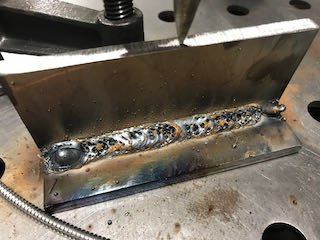
And yes, I know how to run this machine, I am a certified welder and have double checked everything I can, outside getting a new bottle of gas. Polarity is correct, etc. It's good Lincoln Electric wire. Parts are clean. Gas is C25.
I believe I have narrowed the problem down to this aluminum part:
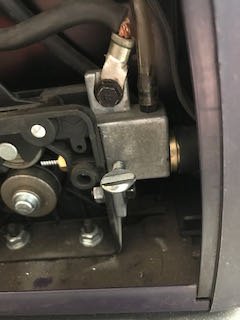
It's the connector between the machine and the gun. It's aluminum and the gun port is brass. Galvanic corrosion. Yay. This machine is older, and I have never had this apart.
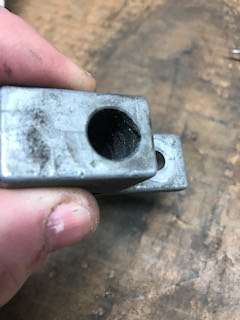
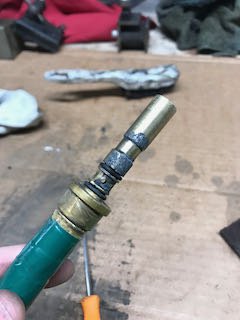
I am certain this is where the air leak is coming from. The aluminum corroded to the point of deep pitting. The O rings are dead - I tried replacing them first to no avail. Unless I plan to make this machine a dedicated flux core welder, I need to replace the connector and the gun. The gun is easy. The connector, not so much. It isn't available anymore. Best as I can tell, after searching the deepest bowels of the interwebs, it is nowhere to be found.
In any case, I have re-engineered this part. I'm pretty sure, even as a noob, I can make this on my Bridgeport (when it is operational again). My specific question is, how can I machine this little feature? It has to be there. I think I can machine the rest, order of operations not withstanding. But what kind of a tool, besides a hand file, would I use to machine this little lip?
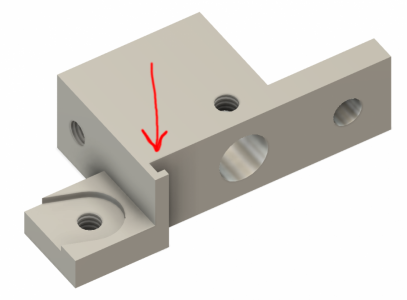
I didn't include all the dimensions on this drawing, but you should be able to tell what I am talking about (I hope). It's .125 wide, and about .065 deep. And there's a lip thats .065 wide at the outermost part.
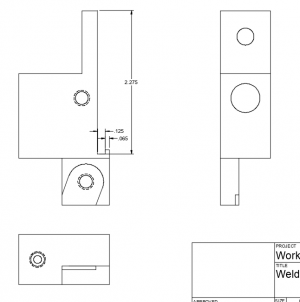

And yes, I know how to run this machine, I am a certified welder and have double checked everything I can, outside getting a new bottle of gas. Polarity is correct, etc. It's good Lincoln Electric wire. Parts are clean. Gas is C25.
I believe I have narrowed the problem down to this aluminum part:

It's the connector between the machine and the gun. It's aluminum and the gun port is brass. Galvanic corrosion. Yay. This machine is older, and I have never had this apart.


I am certain this is where the air leak is coming from. The aluminum corroded to the point of deep pitting. The O rings are dead - I tried replacing them first to no avail. Unless I plan to make this machine a dedicated flux core welder, I need to replace the connector and the gun. The gun is easy. The connector, not so much. It isn't available anymore. Best as I can tell, after searching the deepest bowels of the interwebs, it is nowhere to be found.
In any case, I have re-engineered this part. I'm pretty sure, even as a noob, I can make this on my Bridgeport (when it is operational again). My specific question is, how can I machine this little feature? It has to be there. I think I can machine the rest, order of operations not withstanding. But what kind of a tool, besides a hand file, would I use to machine this little lip?

I didn't include all the dimensions on this drawing, but you should be able to tell what I am talking about (I hope). It's .125 wide, and about .065 deep. And there's a lip thats .065 wide at the outermost part.




